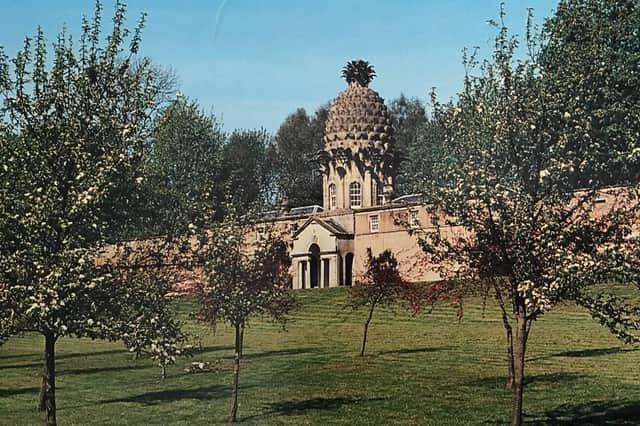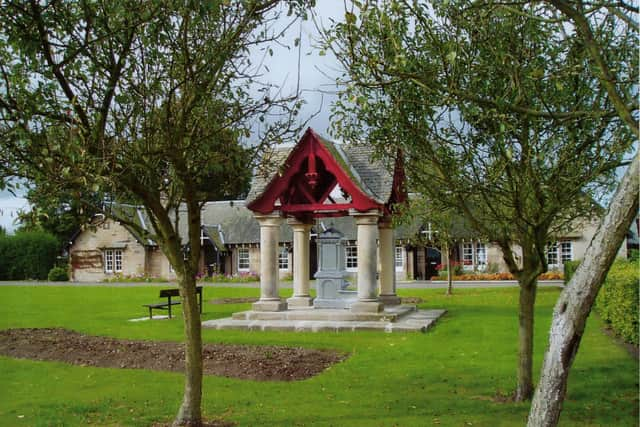Falkirk district history walk: From the Dunmore Pineapple to the model village


This walk begins in the little car park at the Pineapple.
The track from the main road to the carpark is badly pot-holed so take care here and also on the paths you willl use throughout the walk.
From the car park make your way into the walled garden where you can see the magnificent stone pineapple erected by John Murray, 4th Earl of Dunmore, in the second half of the 18th century.


Advertisement
Hide AdAdvertisement
Hide AdHe acquired the lands of Elphinstone in 1754 and the name Dunmore was transferred from his family estates in Perthshire.
Some think it was built at the same time as the portico it sits on (1761) and others that it was added after the Earl returned from a spell in America as Governor of New York and Virginia, around 1777.
Pineapples were certainly grown here and the high heat required was obtained by cavity wall heating, organic heat from tanners bark and manure and via south-facing, sloping glass windows which were still there in the early 20th century.
The Pineapple is in the care of the Landmark Trust and can be rented as a holiday home.Leaving the Pineapple you should pass out of the walled garden by a gate on the back right and follow the path which leads towards the ruined Elphinstone Tower, formerly the castle of the Elphinstones, built around 1500.
Advertisement
Hide AdAdvertisement
Hide AdWhen the new family built Dunmore Park in 1822 the old tower was adapted into a family Mausoleum with a graveyard adjoining.
In 1845 the family built St Andrews Episcopal Church next to the tower.
It was demolished a few years ago and sadly the tower has been allowed to decay.Now return to the path which leads us parallel to the main road beyond which you will see across the River Forth to Clackmannan Church and Tower which are very prominent.
At the end of the path turn left towards the estate and you will be able to see on the left the ruins of the fabulous Dunmore Park mansion. Unfortunately the ground conditions are such that you will only manage to see it from afar.
Advertisement
Hide AdAdvertisement
Hide AdThis building was designed by William Wilkins in 1822 and is similar to Dalmeny House. By 1911 had been sold to the Jones family, ironfounders of Larbert, and around 1960 served as a girls’ school.
It was abandoned not long after and all the visionary plans for restoration have come to nothing.
The farm buildings are also very attractive with the familiar castle-like square crenellated towers.
You should now make your way back down towards the main road and cross (with great care) to the road leading to Dunmore Home Farm. This will take you to a path parallel to the River and on to the village of Dunmore.
Advertisement
Hide AdAdvertisement
Hide AdFormerly known as Elphinstone Pans it was redesigned from the 1840s on by the Dunmore family as a kind of model ‘English’ village with its central village green.
The school building near the main road and the old smithy close to the river with its horseshoe doorway are the best known buildings and the well with its poetic inscription is worth a look.
After visiting the old harbour make your way back across the main road and retrace your steps along the path that leads back to the Pineapple.